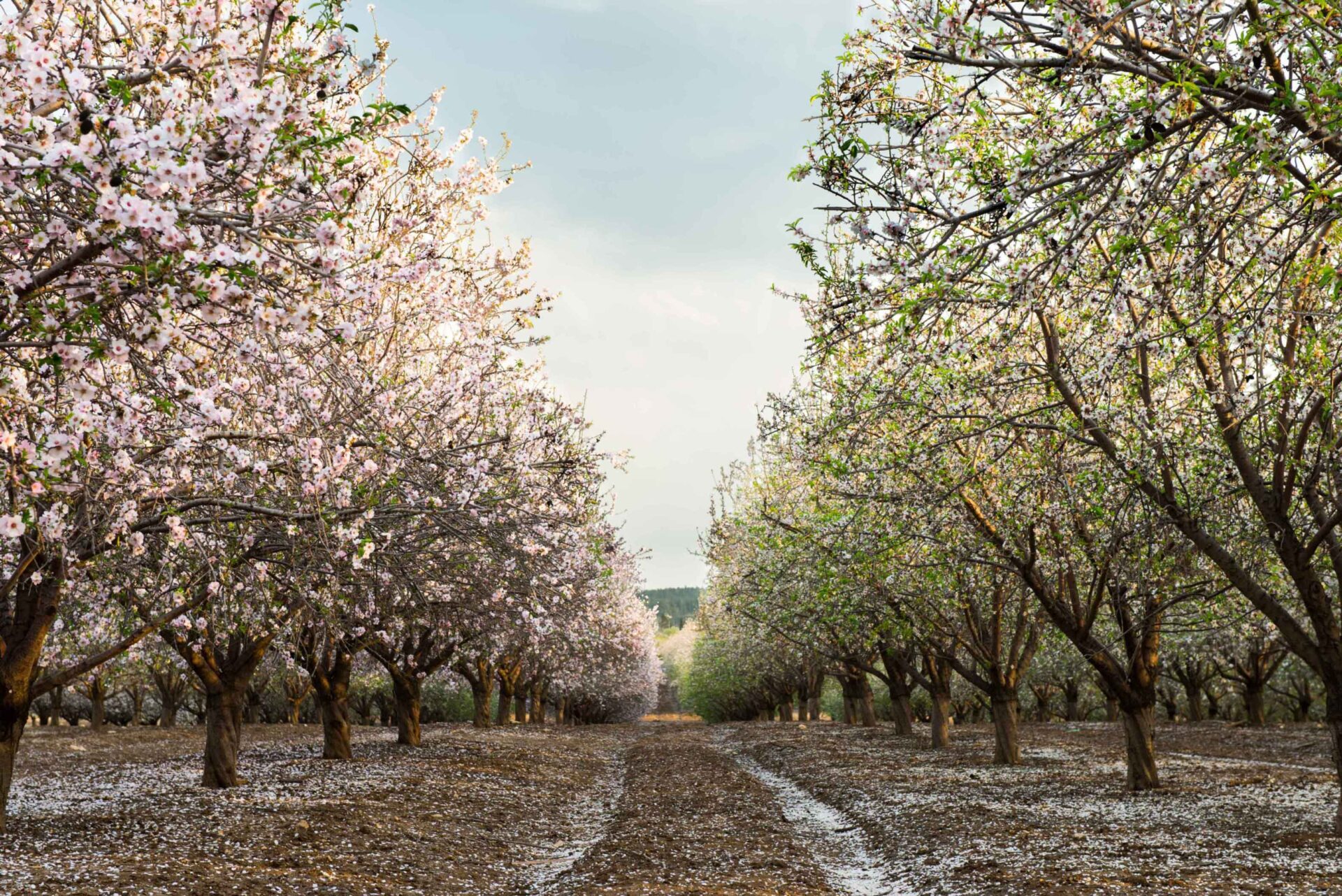Fungal disease management in almonds requires year-round vigilance.
The overall process for integrated pest management of fungal diseases calls for knowledge about the life cycle of the disease, the crop and environmental triggers.
Emily Symmes, University of California Cooperative Extension (UCCE) Integrated Pest Management (IPM) advisor in the Sacramento Valley, said actively assessing all stages of a fungal disease, monitoring and tracking weather patterns will help growers be proactive in disease management.
Speaking at the Mid Valley Nut Conference in Modesto, Symmes noted one more key components of a good IPM program is evaluation of fungicide treatments done over the past year.
Growers advised to have a ‘game plan’
“Make a note of what happened, what worked and what didn’t work in your IPM program to help you plan for next year,” she said.
Moisture and temperature are the drivers for fungal diseases. Rain or fog, irrigation systems that wet the canopy of the tree or even humidity created by tighter tree spacing can create an environment for fungal growth. Infections occur when a pathogen, environmental conditions and a susceptible host meet at the right time.
Continuous monitoring for diseases helps growers notice when symptoms develop. Monitoring after a treatment can indicate if the timing of the application was good or off and if coverage was adequate. Monitoring for disease is not always easy, Symmes said. Unlike insect pests, diseases can be difficult to identify.
“With pathogens, growers really need to be ahead of the game, scouting for disease symptoms, knowing the life stages—when they will sporulate, and watching weather patterns,” she said.
The stage of the growing season is also important. Many key fungal diseases in almonds start in all stages of bloom to petal fall. Depending on variety and location and history of the orchard will drive IPM decisions.
Fungal disease management uses cultural, mechanical, physical and chemical tactics, Symmes said. Cultural practices that can help prevent diseases include planting schemes that allow for more air movement, irrigation management and pruning. In addition to pruning, a mechanical tactic is removal of diseased wood from the orchard to reduce the amount of inoculum in the orchard.
Symmes said that knowing the genetic susceptibility of almond varieties to fungal disease will help growers make choices when planting or if they know their variety is susceptible, they can make some management choices to improve the vigor of their trees. Managing elements, irrigation and nutrition will help those trees be more robust, she said.
Diseases of note
The fungal disease anthracnose is less common in the San Joaquin Valley, Symmes said, but not in El Nino years. The disease can be severe in warm, wet springtime weather conditions, affecting flowers, leaves and fruit. Symptoms of this disease, which can be confused with leaffooted bug feeding, may appear three weeks after petal fall. Profuse gumming occurs as the infection progresses. Infected nuts show round, orange, sunken lesions on the hull.
Other symptoms include spur and limb dieback. Leaves on infected spurs develop marginal necrosis beginning with water soaked areas that fade in color. Leaves die but remain attached to branches.
Nonpareil almonds have low susceptibility to anthracnose. Almond varieties with high susceptibility include Thompson, Merced, Price, Peerless, Winters, Monterey, Fritz and Butte.
In orchards with a history of anthracnose infection, Symmes suggests considering bloom treatments with reapplications at 10-14 day intervals if wet conditions persist. Chemistries should be rotated. Best management practices include pruning out dead wood.
Grayish black, soft appearing spots on leaves, fruit and twigs are signs of a Scab infection. Severe infection can cause early defoliation and weaken trees.
Scab is more common in Sacramento Valley almond orchards and occurs during prolonged wet spring weather or where irrigation wets tree foliage. All almond varieties are susceptible with Carmel, Peerless and Monterey having the least resistance.
Fungicide treatment five weeks after petal fall is effective, but earlier treatment may improve control. In orchards with history of Scab infection, dormant copper/oil sprays are advised.
Shot hole sprays may control scab. However, a scab treatment may be required if rain occurs into mid- to late spring. Scab resistance to quinone outside inhibitor fungicides (also known as strobilurins) has been documented and Symmes said to avoid use of Fungicide Resistance Action Committee Group number 11 fungicides in these orchards.
The presence of black fruiting structures in the fall indicate a spring treatment for shothole is warranted. If not detected, growers should look for lesions on the leaves in the spring. If monitoring indicates presence of shothole, petal fall and leaf emergence treatments are effective. Zinc applications in the fall hasten leaf drop and can prevent increases in inoculum levels.
Rust appears as small, yellow spots on the upper surface of leaves. On the lower leaf surface the spots are more rusty red colored and the rust colored spores produced in the lesions erupt through the surface. This disease occurs sporadically throughout most almond growing areas and is most serious in young orchards where bloom sprays have not been applied.
Reducing orchard humidity is one method of control.
Resistance management
Resistance management with fungicide materials is critical to their long-term efficacy.
“We have good materials and used responsibly, they can remain effective,” Symmes said.
Pathogens that require multiple treatments over a season, Symmes said, can become resistant if fungicides with different modes of action are not rotated. When possible multi-site mode of action materials are recommended. Fungicides should be rotated or tank mixed when possible and single mode of action applications should be limited.
The Fungicide Resistance Action Committee (FRAC) web site has fungicide numbers for resistance management and also supplies the risks associated with each product. Symmes said that rotating with different FRAC numbers, and tank mixing where legal helps keep fungicides effective.
Growers should plan well in advance of bloom which products they will use for fungal disease outbreaks.












